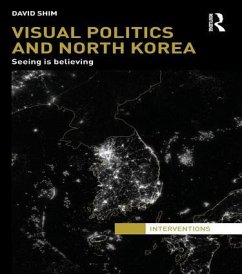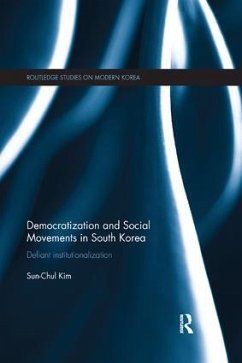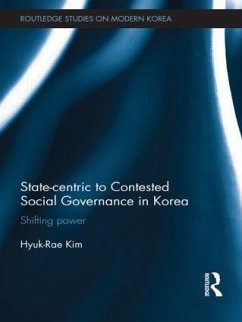
De-Bordering Korea
Tangible and Intangible Legacies of the Sunshine Policy
Herausgeber: Gelézeau, Valérie; Delissen, Alain; De Ceuster, Koen

PAYBACK Punkte
35 °P sammeln!
As tensions remain on the Korean peninsula, this book looks back on the decade of improved inter-Korean relations and engagement between 1998 and 2008, now known as the 'Sunshine Policy' era. Moving beyond traditional economic and political perspectives, it explores how this decade of intensified cooperation both affected and reshaped existing physical, social and mental boundaries between the two Koreas, and how this 'de-bordering' and 're-bordering' has changed the respective attitudes towards the other. Based around three key themes, 'Space', 'People', and 'Representations', this book looks...
As tensions remain on the Korean peninsula, this book looks back on the decade of improved inter-Korean relations and engagement between 1998 and 2008, now known as the 'Sunshine Policy' era. Moving beyond traditional economic and political perspectives, it explores how this decade of intensified cooperation both affected and reshaped existing physical, social and mental boundaries between the two Koreas, and how this 'de-bordering' and 're-bordering' has changed the respective attitudes towards the other. Based around three key themes, 'Space', 'People', and 'Representations', this book looks at the tangible and intangible areas of contact created by North-South engagement during the years of the Sunshine Policy. 'Space' focuses on the border regions and discusses how the border reflects the dynamics of multiple types of exchanges and connections between the two Koreas, as well as the new territorial structures these have created. 'People' addresses issues in human interactions and social organizations, looking at North Korean defectors in the South, shifting patterns of North-South competition in the 'Korean' diaspora of post-Soviet Central Asia, and the actual and physical presence of the Other in various social settings. Finally, 'Representations' analyses the image of the other Korea as it is produced, circulated, altered/falsified and received (or not) on either side of the Korean border. The contributors to this volume draw on a broad spectrum of disciplines ranging from geography, anthropology and archaeology, to media studies, history and sociology, in order to show how the division between North and South Korea functions as an essential matrix for geographical, social and psychological structures on both sides of the border. As such, this book will appeal to students and scholars from numerous fields of study, including Korean studies, Korean culture and society, and international relations more broadly.














